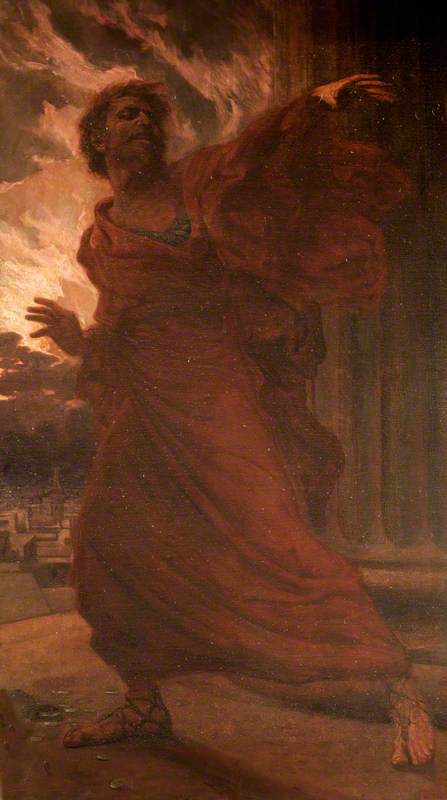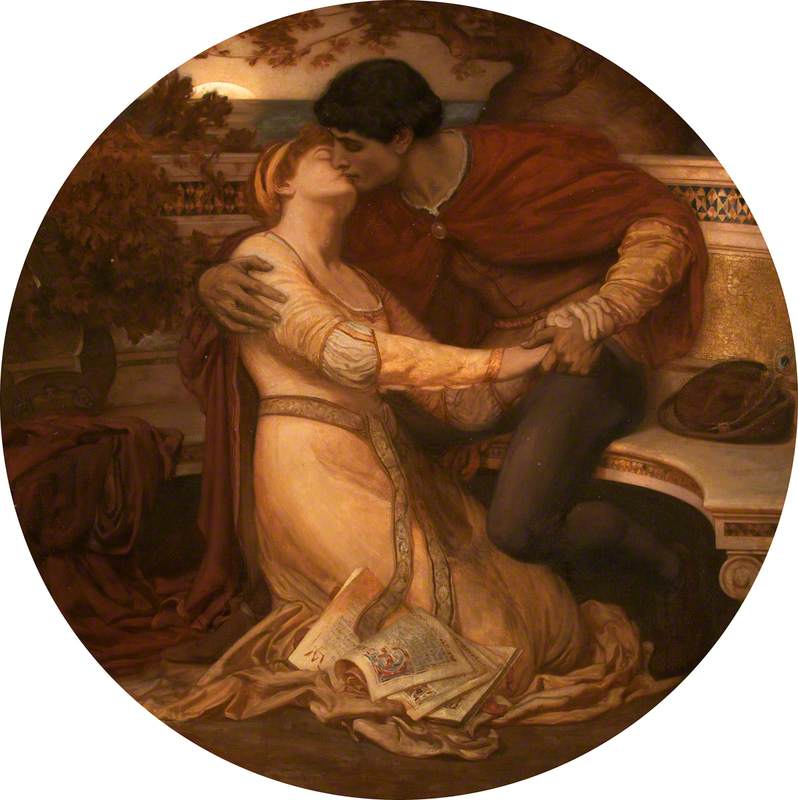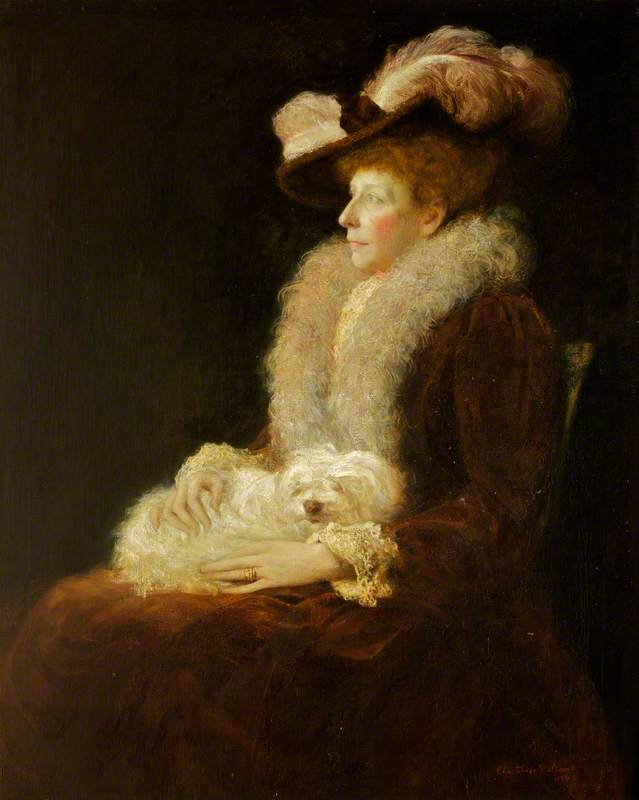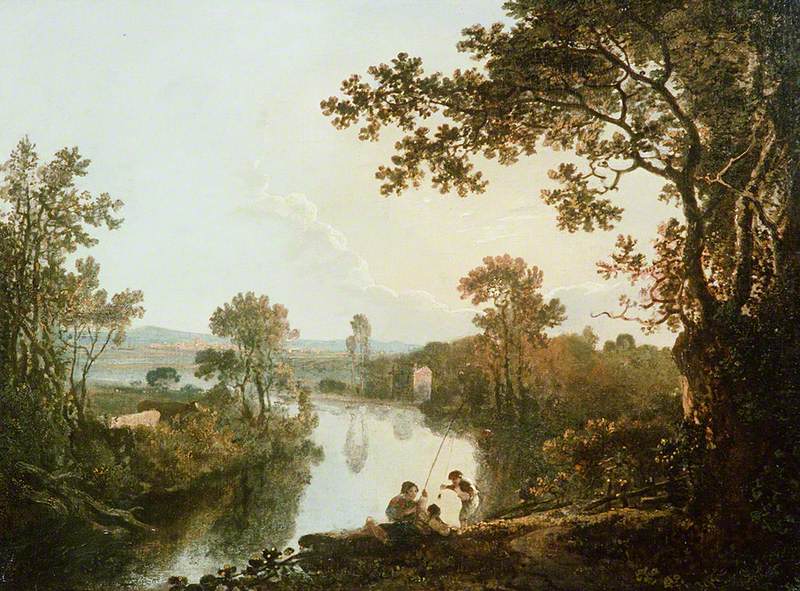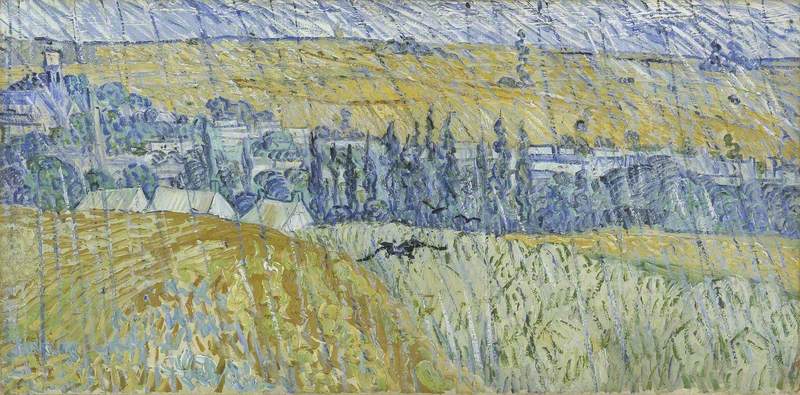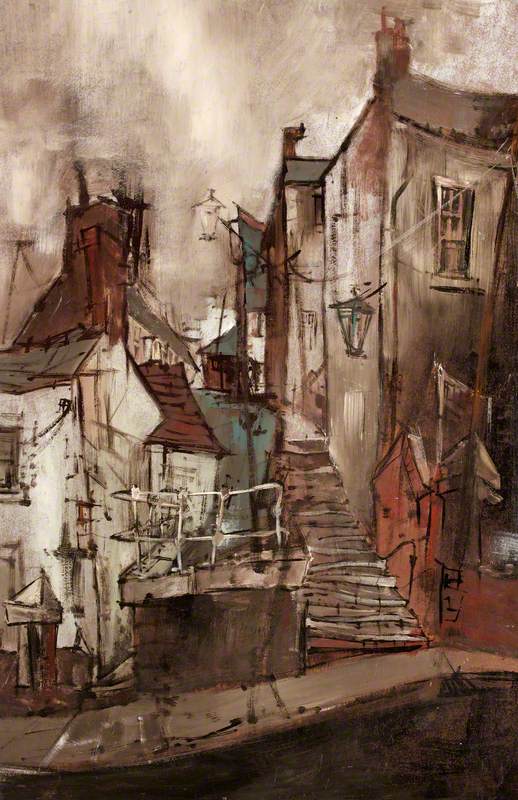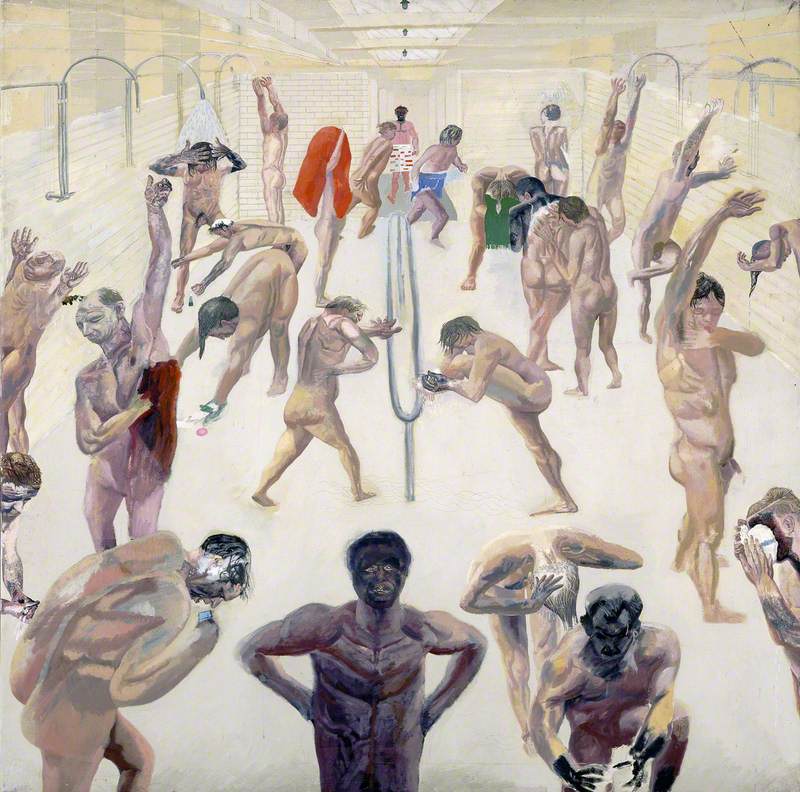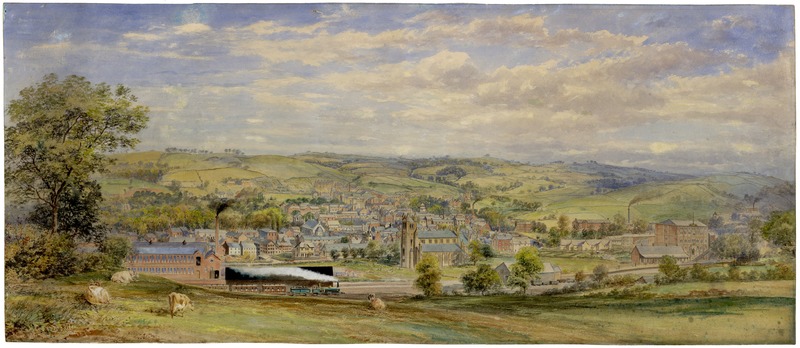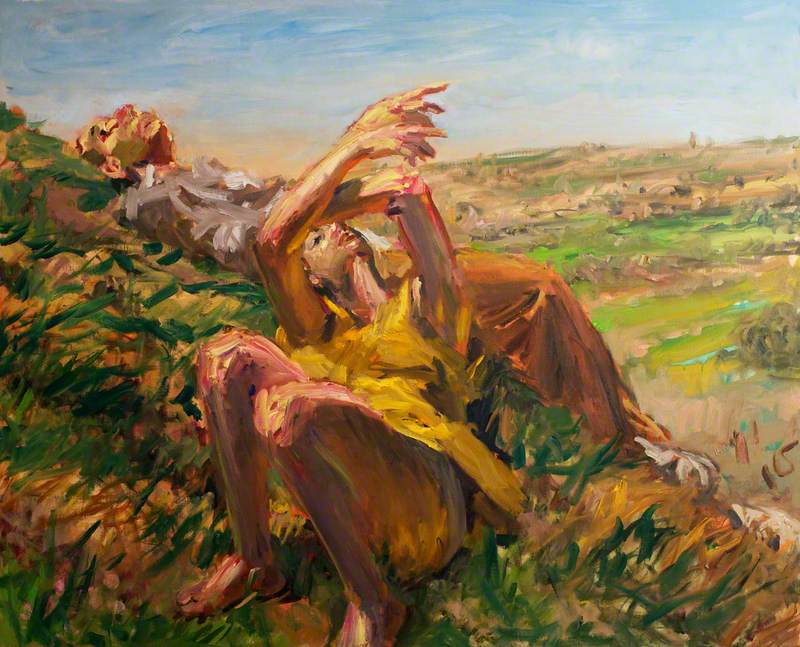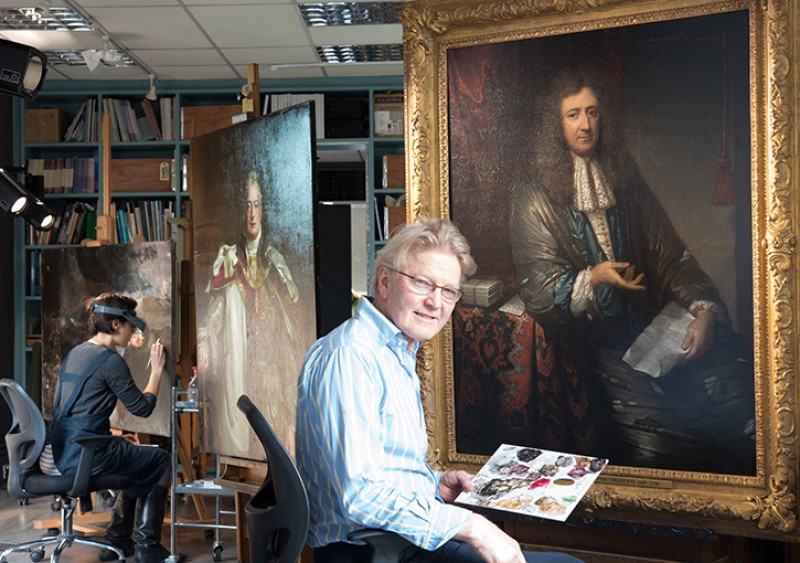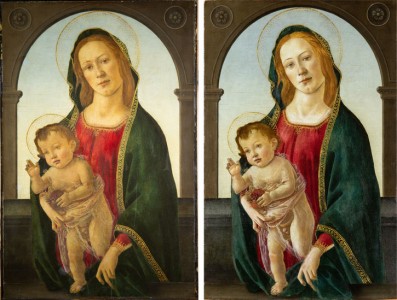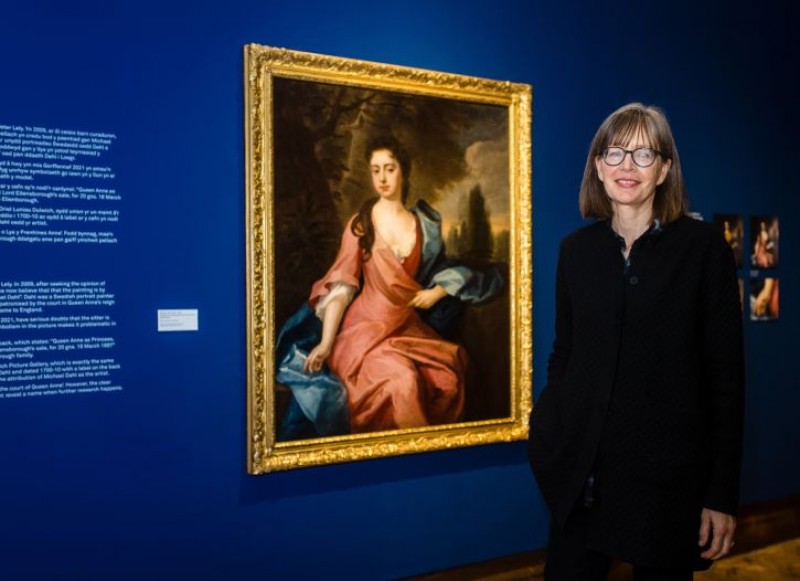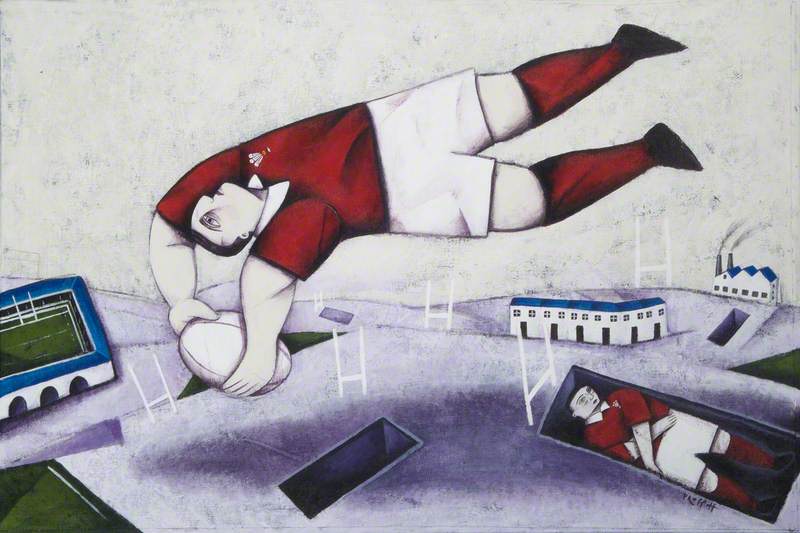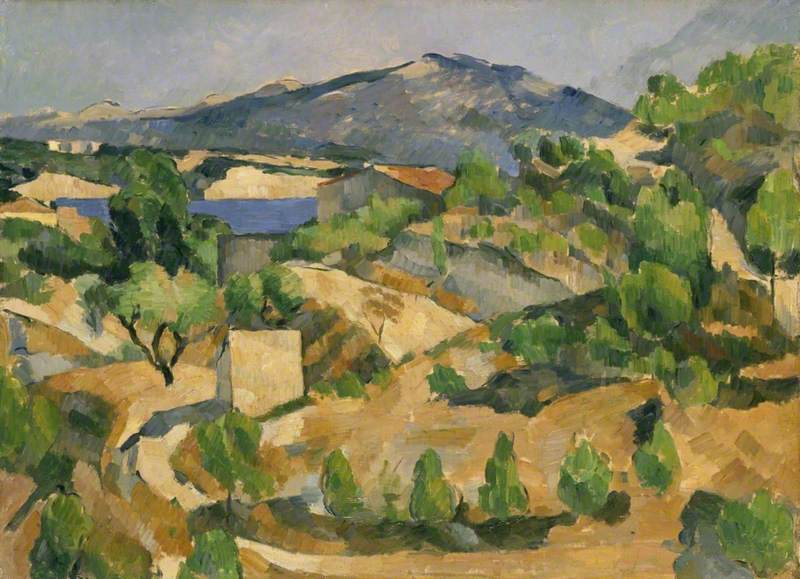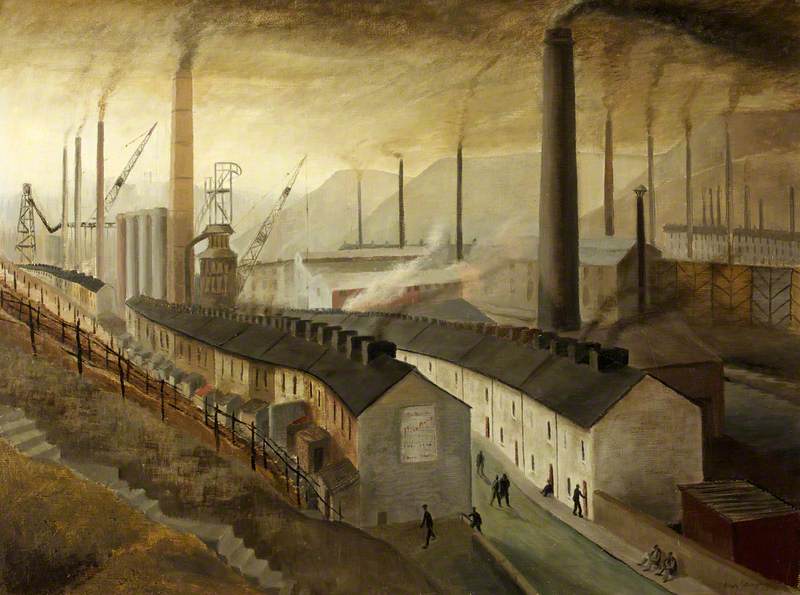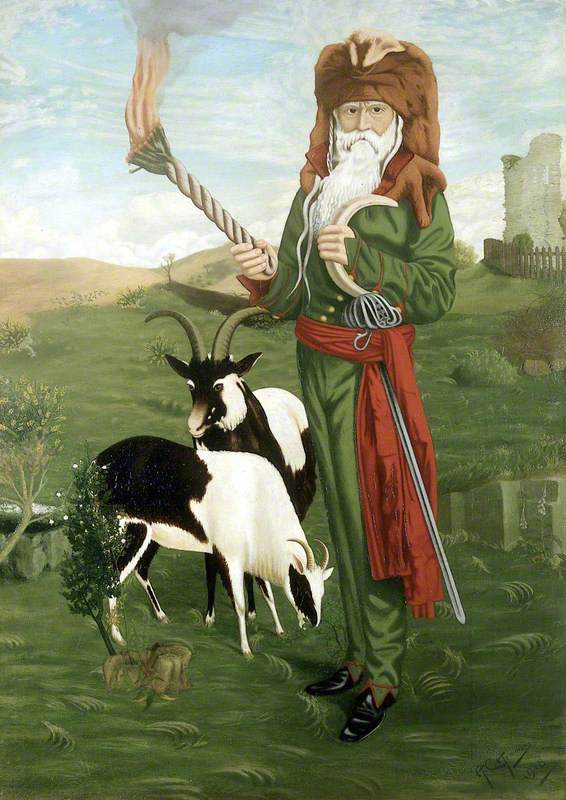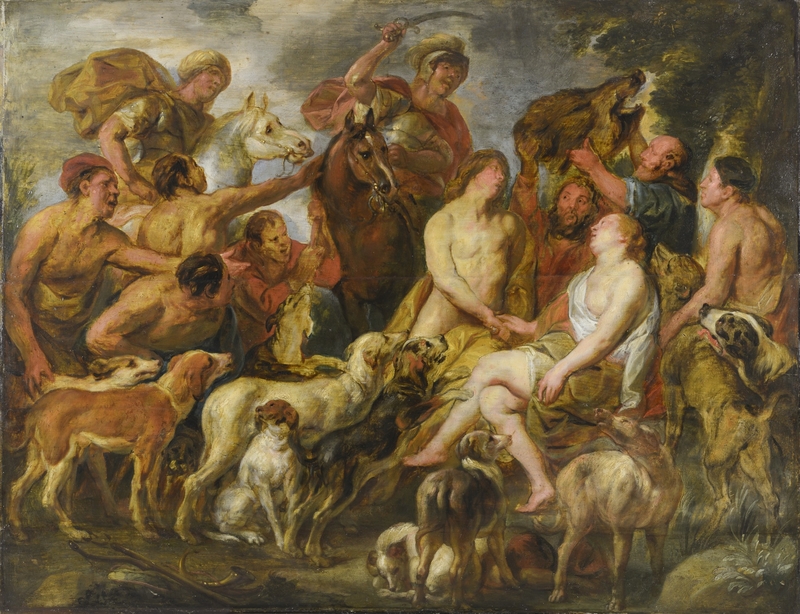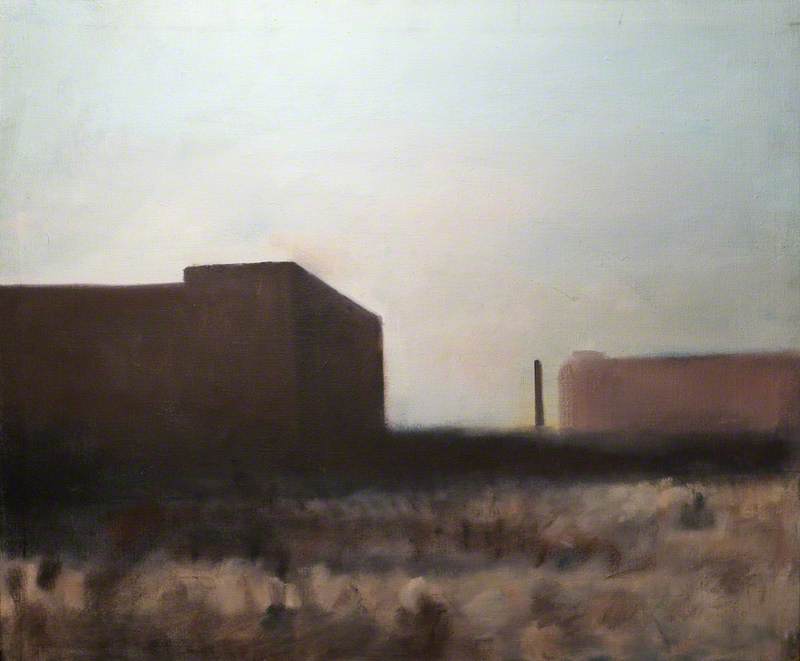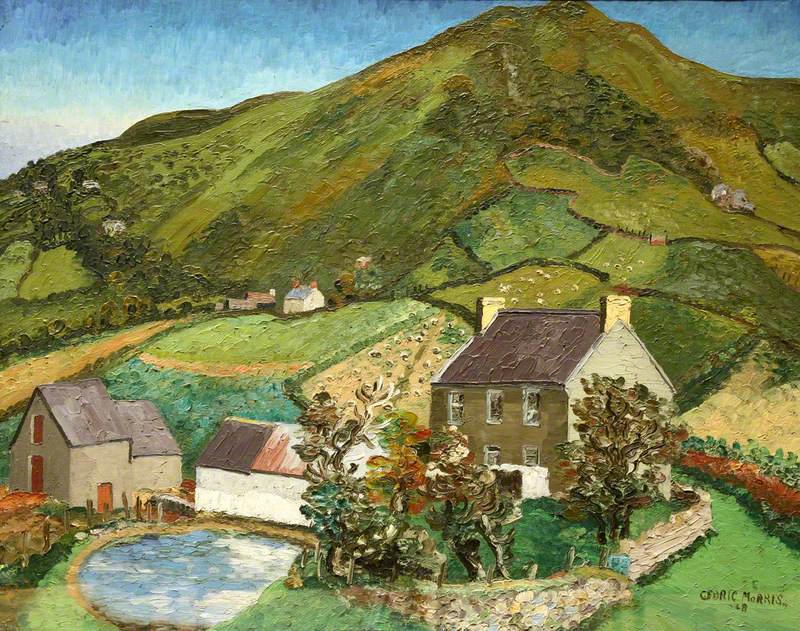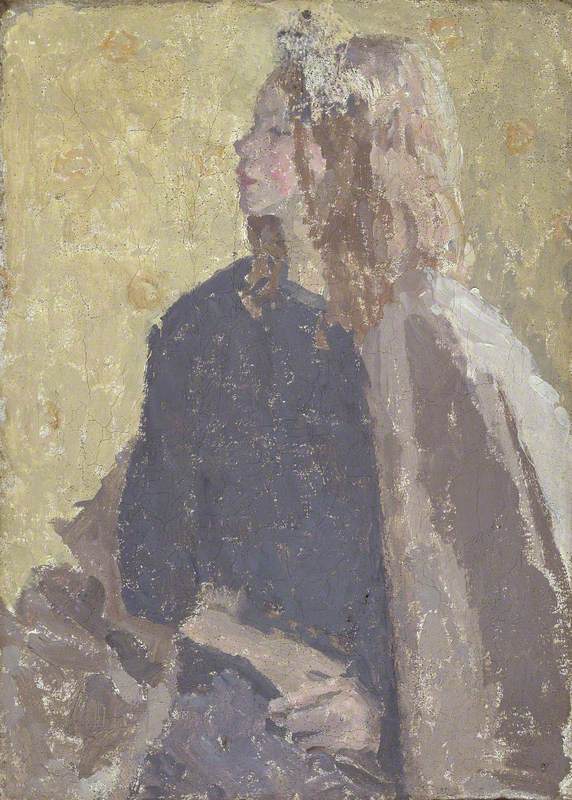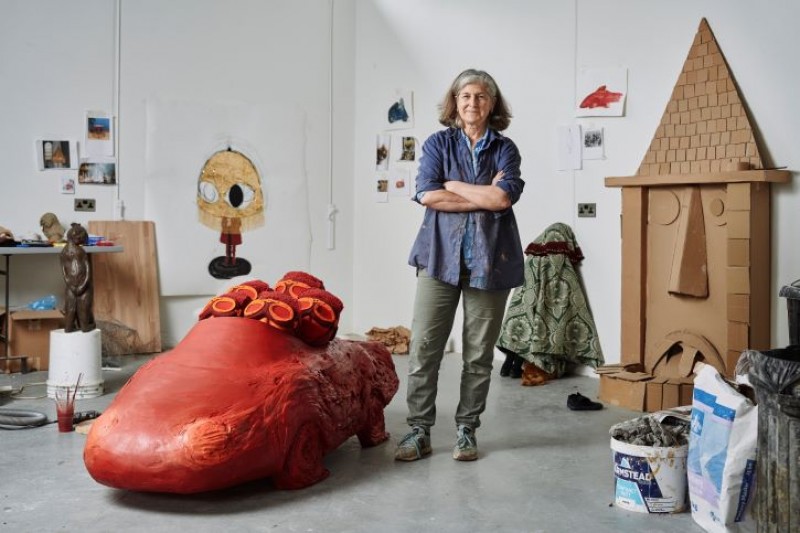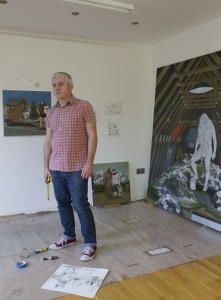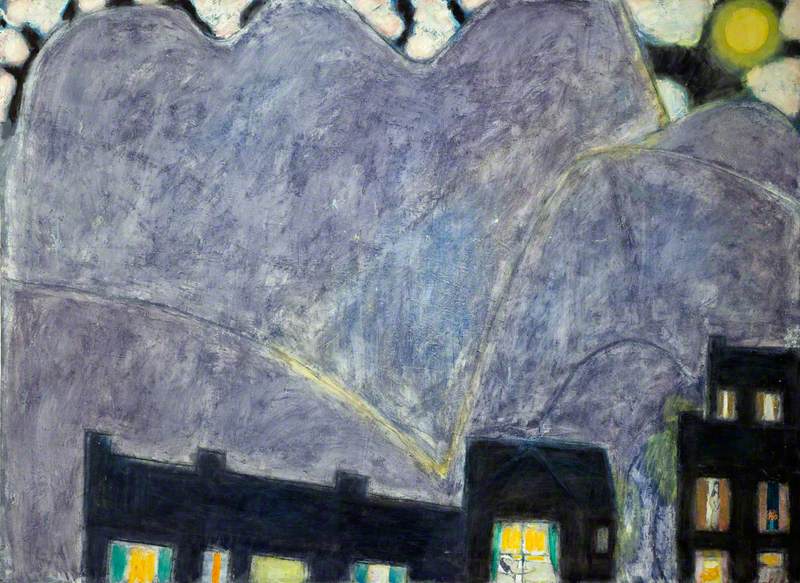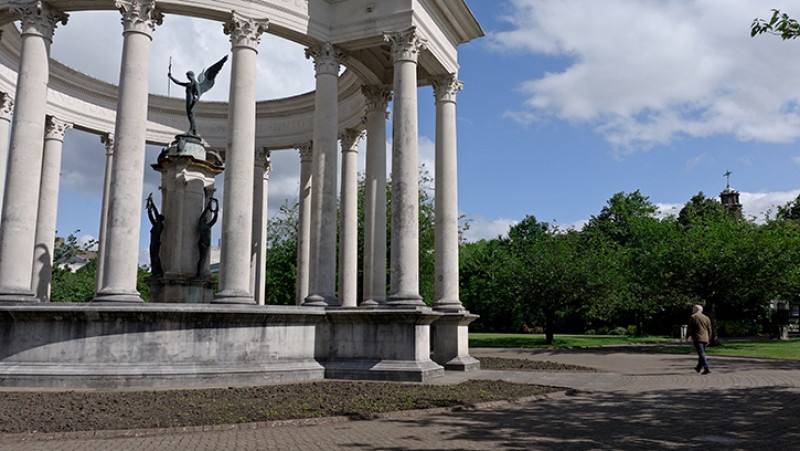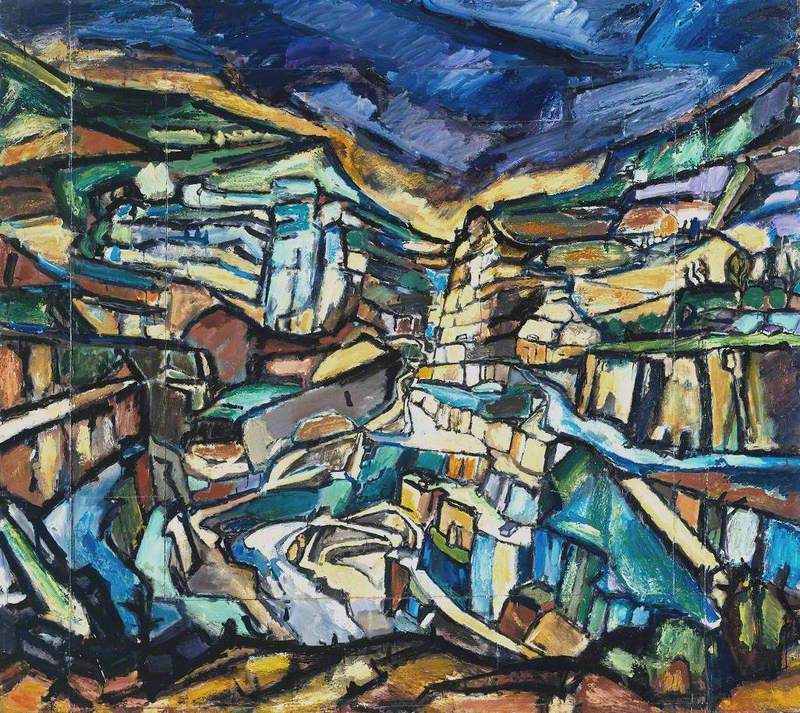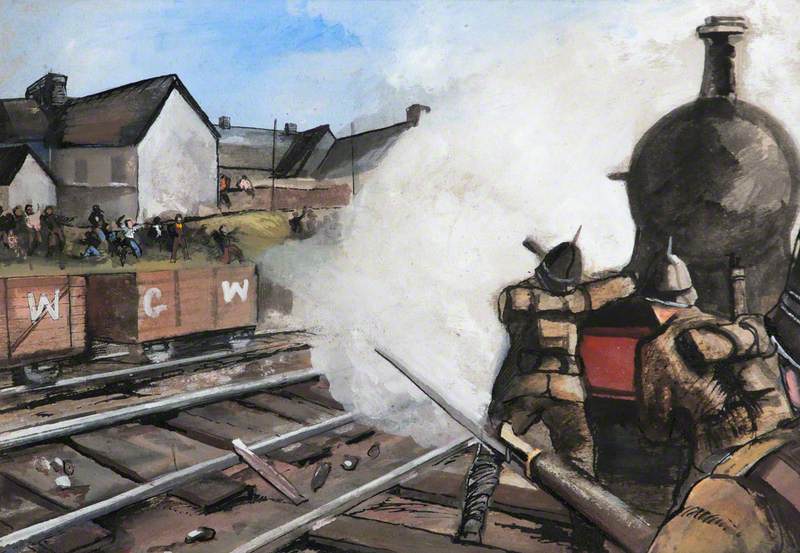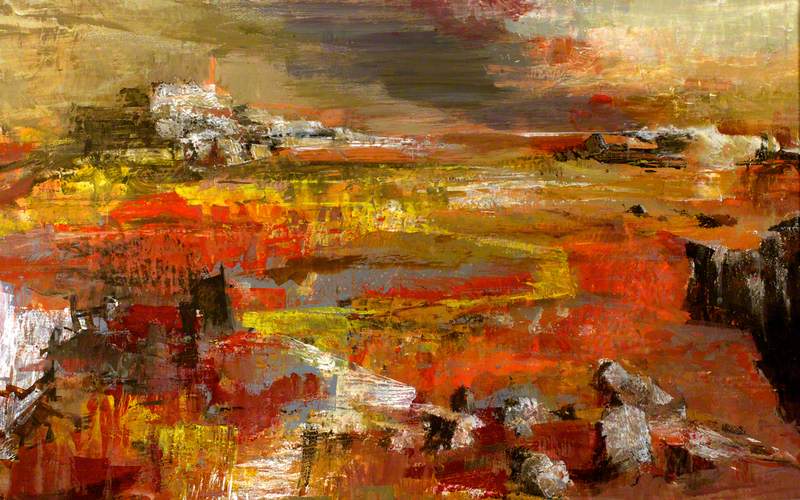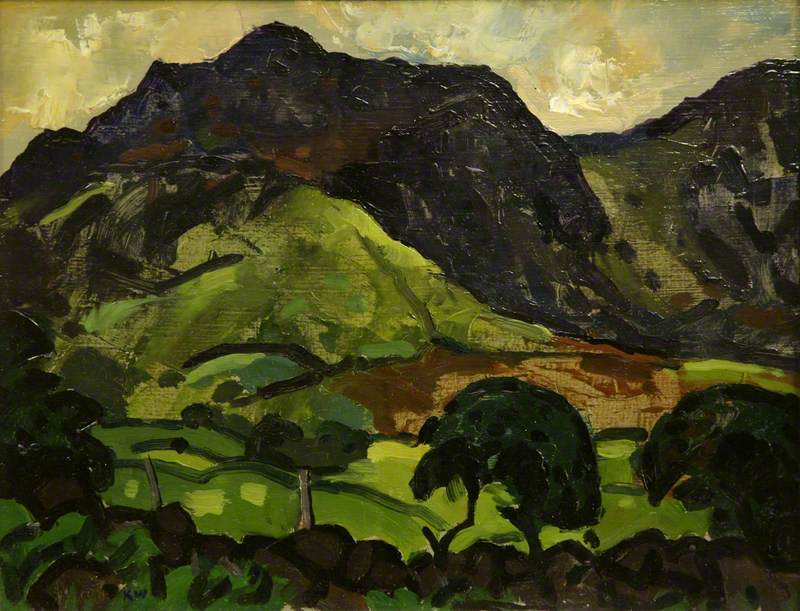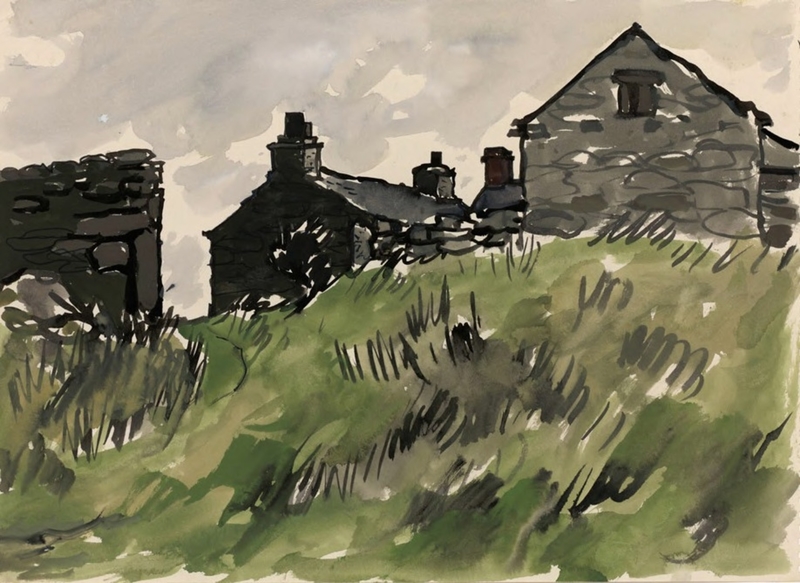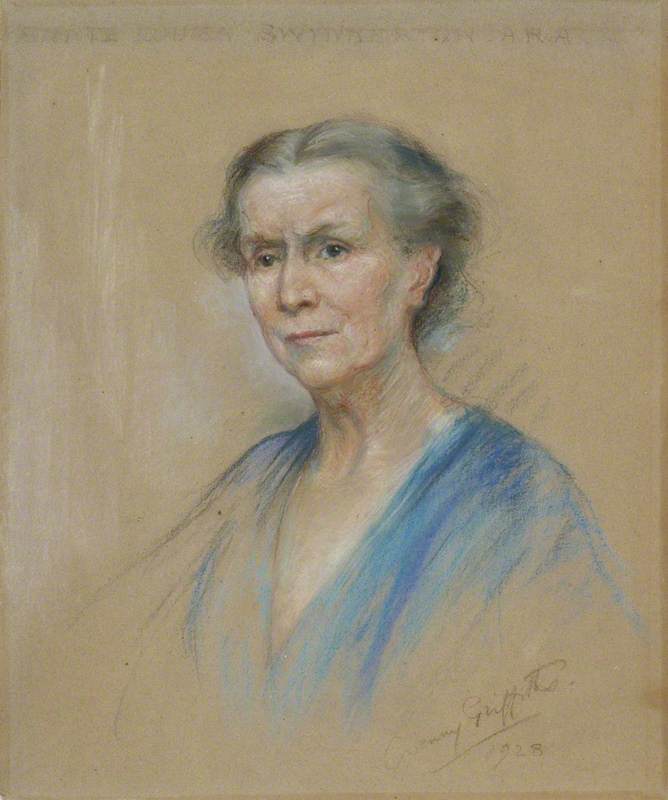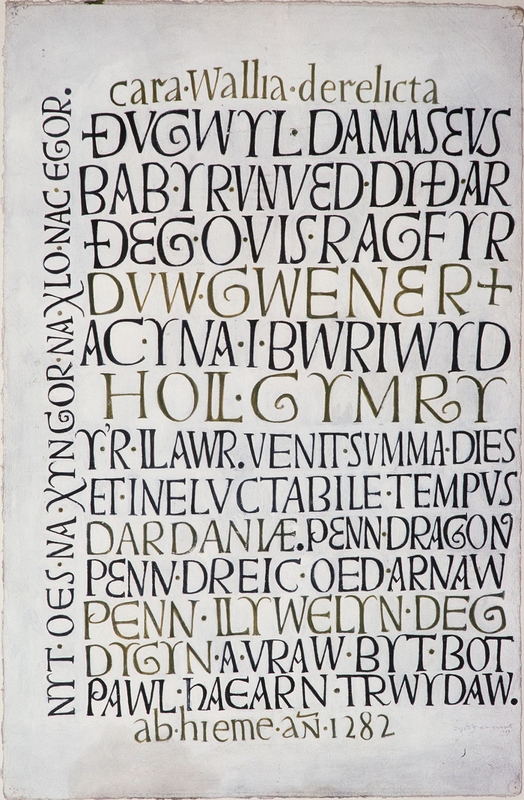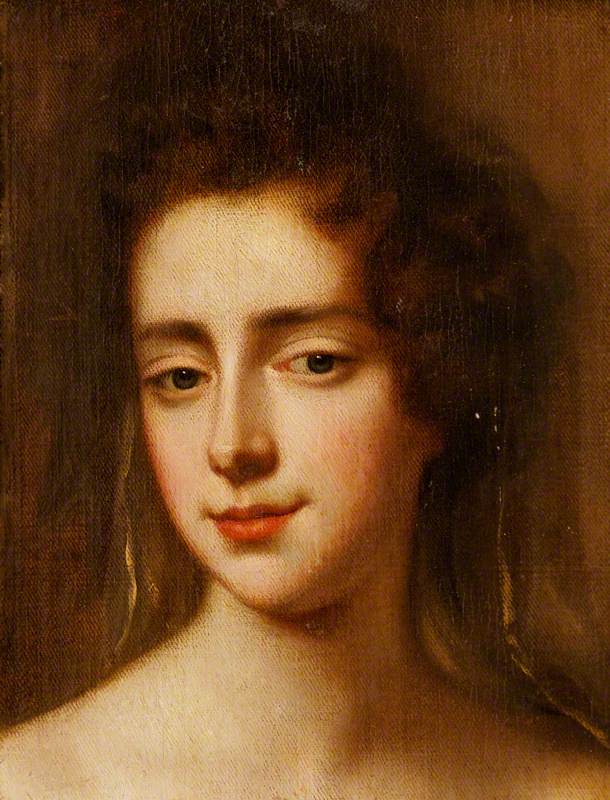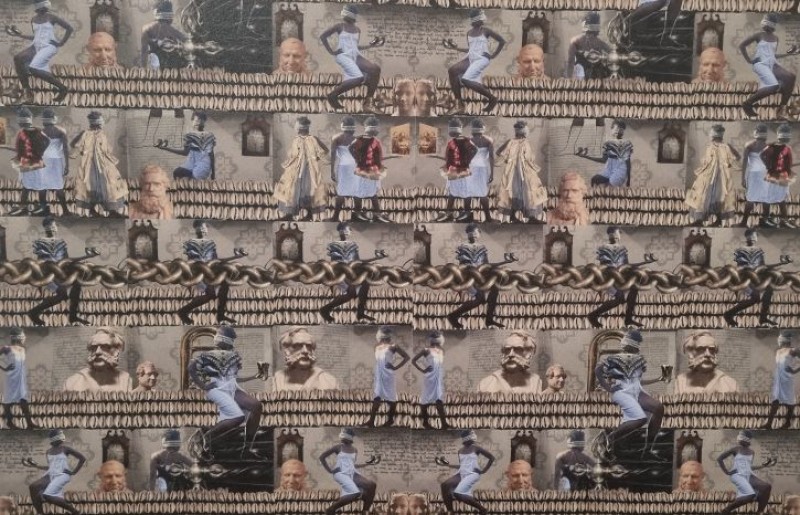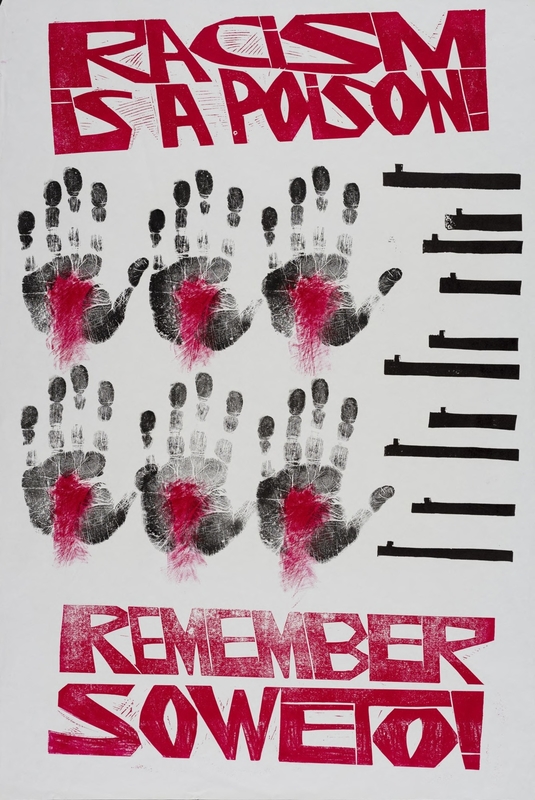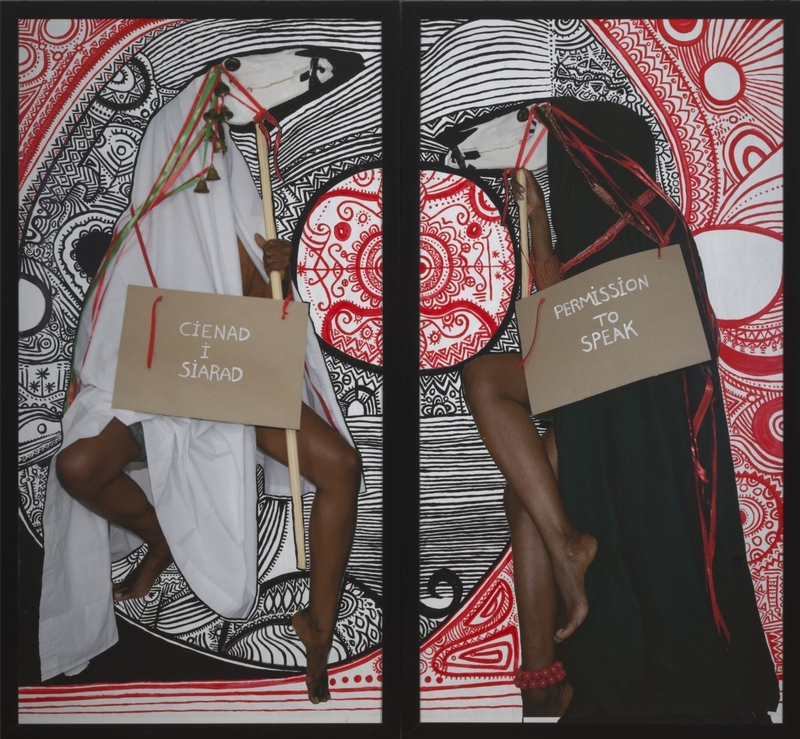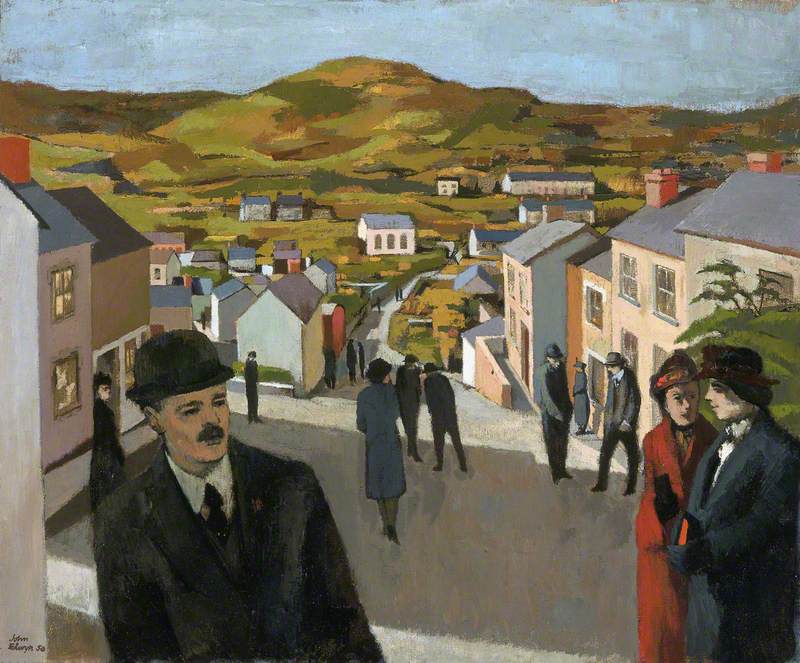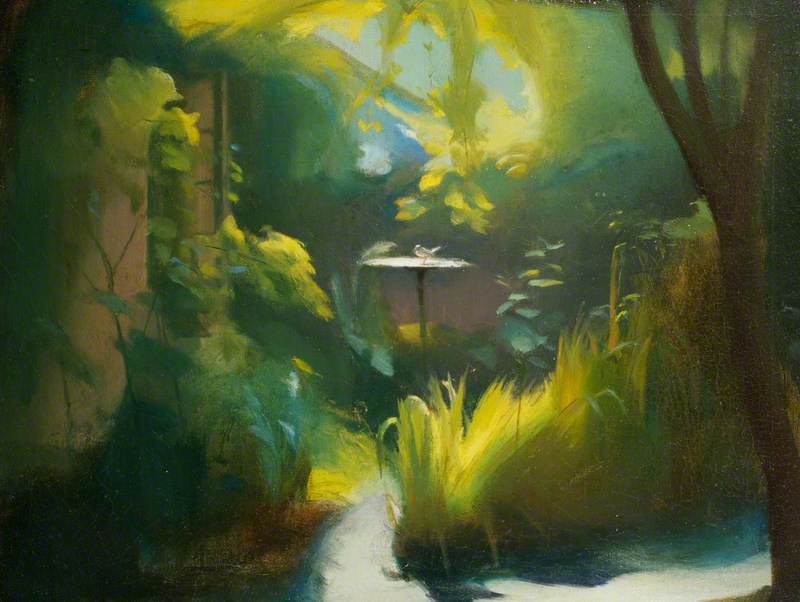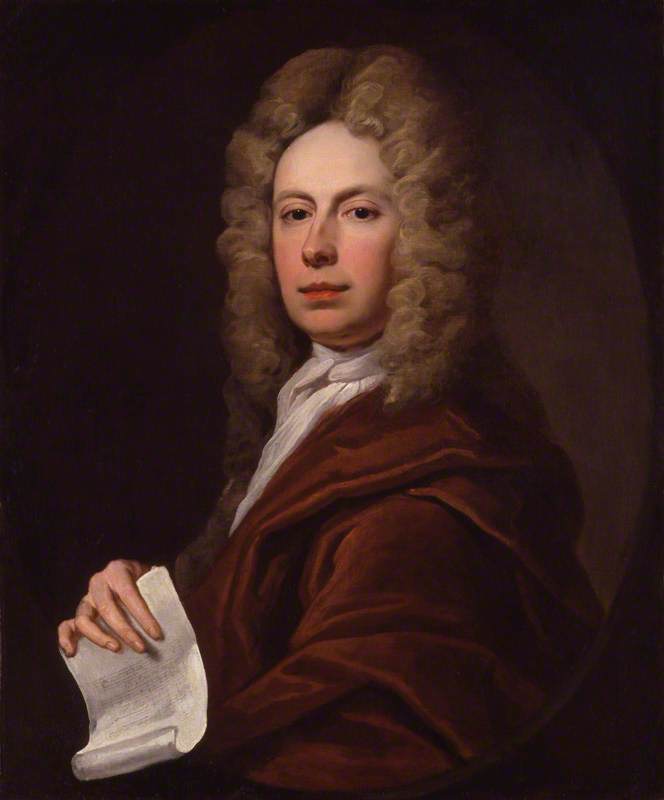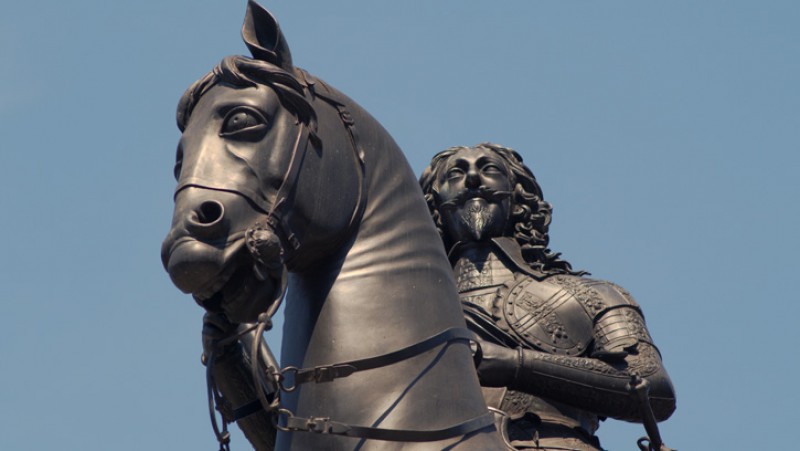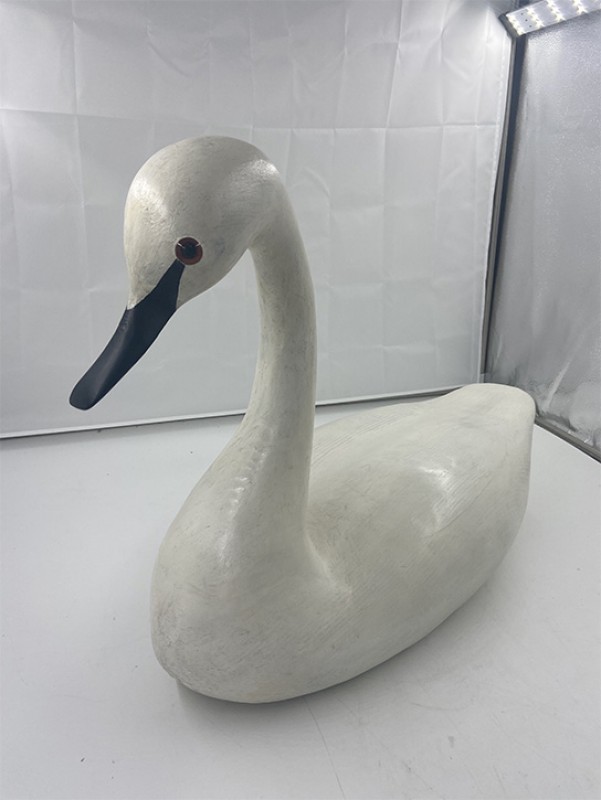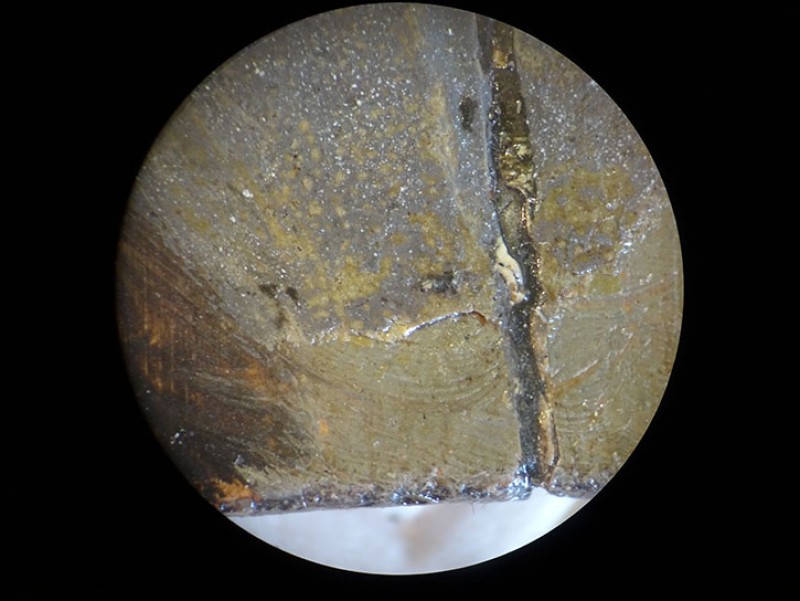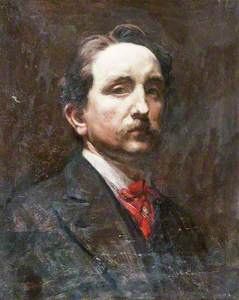Maesteg Town Hall is the cultural heart of the Llynfi Valley in Bridgend County Borough, south Wales. The Grade II listed building is home to Maesteg Library, with the large theatre auditorium on the first floor. And on the walls of the auditorium is where you will find six newly restored paintings by Maesteg's most famous artist, Christopher Williams (1873–1934).
Maesteg Town Hall (aerial view)
2024, photograph 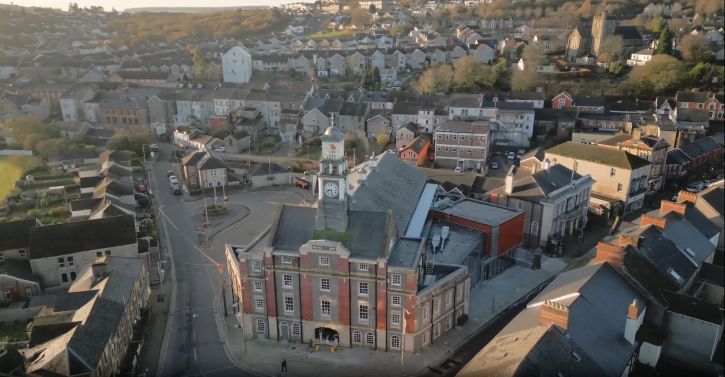
Maesteg Town Hall was built in 1881 and redeveloped in 1914. But by 2019 the historic building needed substantial repair work, as well as improvements to the facilities to make the building fit for the twenty-first century. The large redevelopment project to undertake this work provided a great opportunity to include a conservation project for the six large paintings.
Maesteg Town Hall
c.1930, photograph by unknown photographer 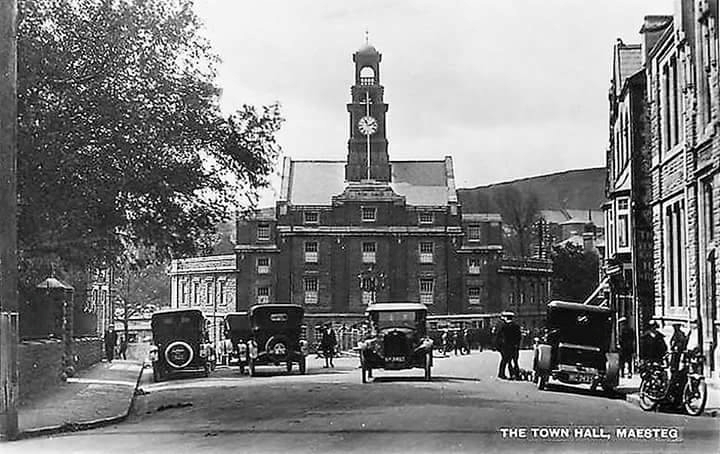
With architect plans drawn and funding secured the work started in early 2020, weeks before the Covid-19 pandemic slowed the progress of the project. The building reopened in November 2024, when the restored Christopher Williams paintings were also unveiled.
Many may not be familiar with Christopher Williams today, but he was an acclaimed artist in the early twentieth century. His portraits were especially in demand: he painted many of the benefactors of the newly opened universities, libraries and museums. Williams received a royal commission to paint the investiture of the Prince of Wales in 1911, and he painted Prime Minister David Lloyd George on several occasions.
David Lloyd George (1863–1945)
1917
Christopher Williams (1873–1934) 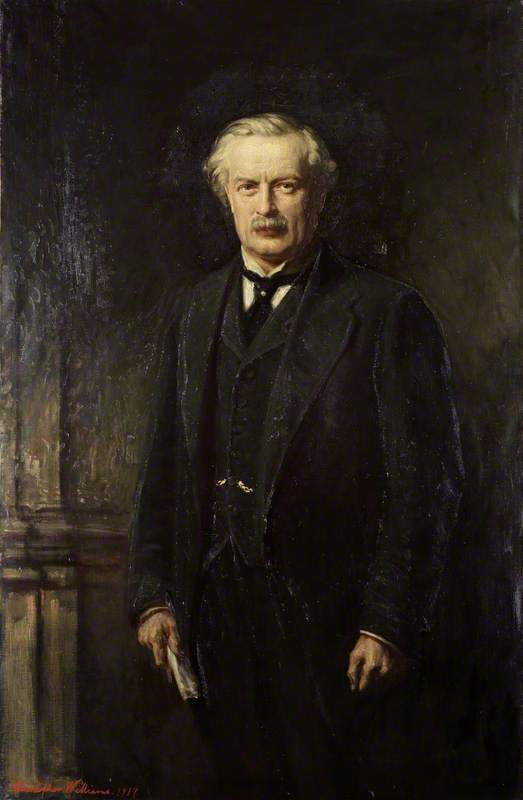
Christopher Williams was born in Maesteg in 1873 and was raised in the industrial town. He studied art at the Royal Academy in London, where he remained after he finished his studies. But Williams would frequently return to Wales, and he was a keen advocate for the arts in Wales, especially the visual arts. He was a judge at Eisteddfodau, and a member of the Arts Committee of the National Museum of Wales.
Williams wanted art to be accessible 'for the masses, not for the classes only.' It was no surprise that when his health started to fail, Williams started to donate some of his works to museums, universities and local authorities.
Just before his death in 1934, he donated two paintings to Maesteg Town Hall, Paolo and Francesco and a portrait of his father, Evan Williams. Later, Williams's widow Emily donated more paintings to the Town Hall, which added great character and interest to the historic auditorium. But the paintings had no protective coverings and were exposed to all the joys and vices of the Town Hall and its many visitors.
By 2019 the paintings, like the building itself, were in need of conservation. One of the biggest challenges for this conservation work was the paintings' size. Christopher Williams didn't paint many small paintings. His reputation was built on larger-scale, more formal works – which is one reason why his works aren't as collectible as they might be. The largest painting in the Town Hall's collection, The Remorse of Judas, is 7 foot tall – and that's excluding the very substantial gilded wooden frame.
The Remorse of Judas is a dramatic biblical scene, set at dawn. In the painting we see Judas dropping the 30 pieces of silver, given to him to betray Jesus. Despite dropping the coins with his left hand, we see coins on the floor on his right side. A quirky detail, probably created to allow for Judas's dramatic pose with his left foot stuck out.
'The Remorse of Judas' painting and frame preparation before hanging
2024, photograph 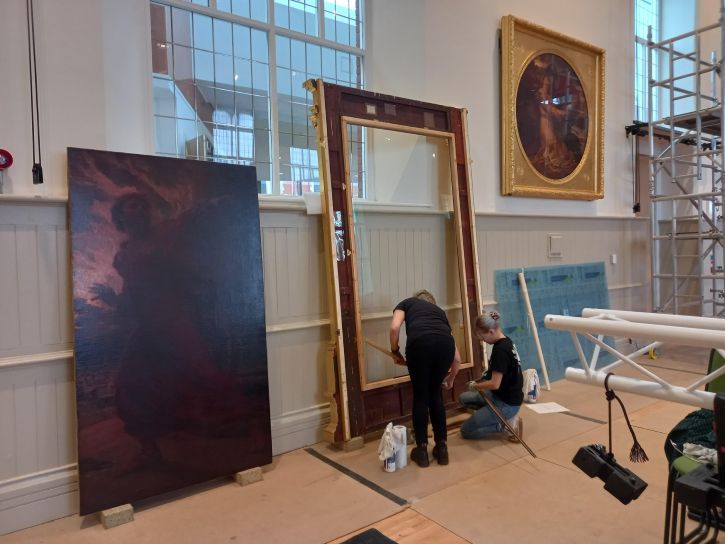
Specialist equipment and expertise were required to deliver this conservation project, and luckily we found some great local experts to work with. The team from Art Works Exhibition Services, a professional art handling company based in Abergavenny, were enlisted to take the paintings down, transport and store them, and to return them back to the Town Hall walls.
Conservators Rachel Howells and Sarah Bayliss undertook the extensive cleaning work on the paintings and the frames. Due to the delays of the Maesteg Town Hall project, the paintings couldn't be returned to the hall until November 2024, which made this Rachel's last job before her retirement.
'The Remorse of Judas' being rehung at Maesteg Town Hall
2024, photograph 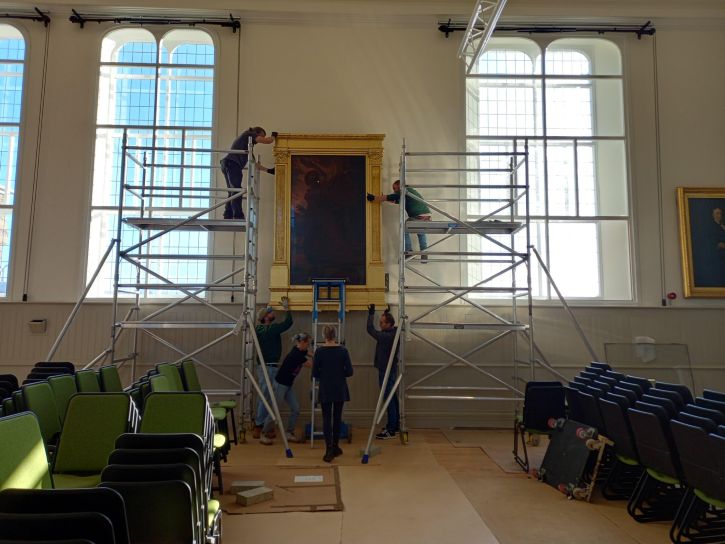
The team from Art Works brought their specialist scaffold towers and equipment to hang the large paintings. Rachel and Sarah had to prepare The Remorse of Judas in the Hall, as the large specialist glass cover for the painting had to be fitted in situ.
Christopher Williams paintings returned to Maesteg Town Hall just before the reopening
November 2024, photograph 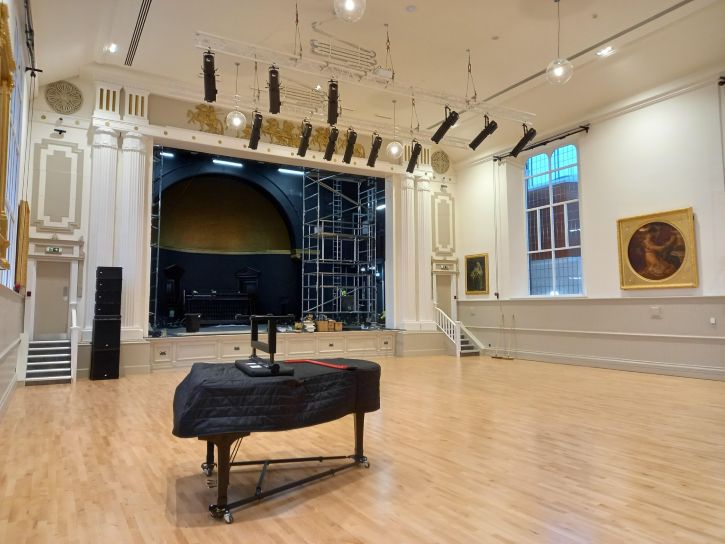
The restored paintings are a vital part of the look of the auditorium, with their gilded frames standing out against the white walls.
Visitors have been telling us that they can observe the paintings much better now, and that they are enjoying finding out more about the stories behind the paintings and the artist. As well as The Remorse of Judas the following five paintings are also back on display.
The portrait of Evan Williams, the artist's father, was one of the paintings donated by Christopher Williams himself, as he believed his father would have wanted the painting to be 'among his own people'.
Mr Evan Williams, the Artist's Father
c.1903
Christopher Williams (1873–1934) 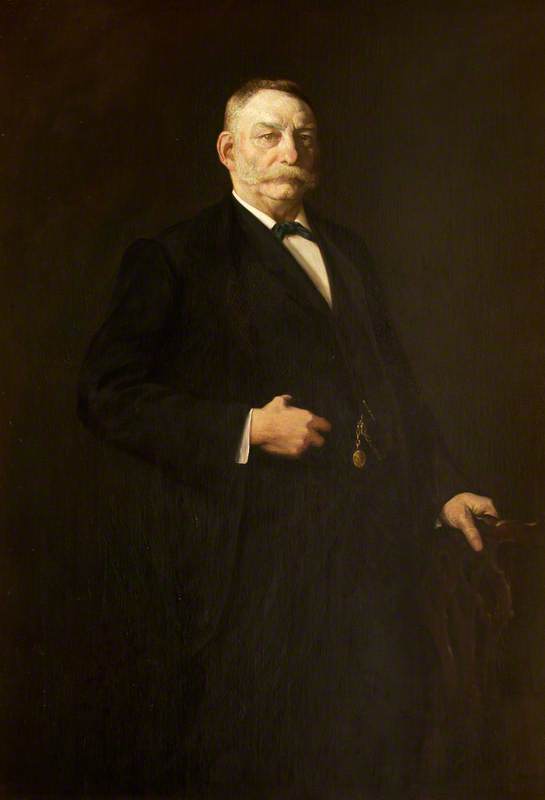
It is believed to have been painted when Evan was Chairman of Maesteg Urban District Council.
The other painting donated by the artist, Paolo and Francesca, was his first painting to be exhibited at the Royal Academy, in 1902.
The conservation cleaning has highlighted the detailing in this painting, such as the beautiful tiles on the bench the couple are sitting on.
Now I'm the Judge is a picture of Williams's son, Gwyn.
'Now I'm the Judge', Gwyn Williams, the Artist's Son
c.1912
Christopher Williams (1873–1934) 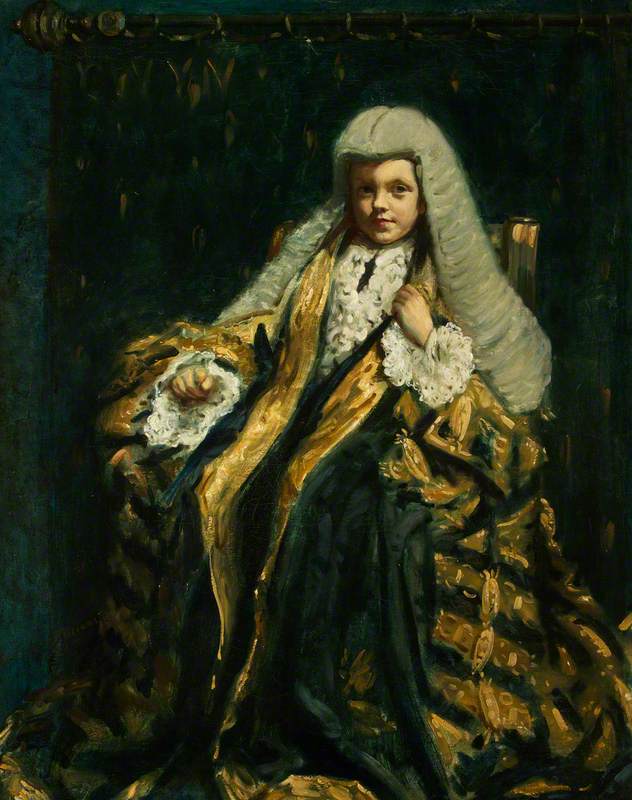
In this quirky portrait Gwyn is wearing the large robes of a local judge. After the conservation work, we can now clearly see the name 'Gwyn' painted in gold in the top left corner – we believe this was done by young Gwyn himself.
The portrait of Alice Sophia Amelia Stopford Green also has a personal connection to the artist.
Alice Sophia Amelia Stopford Green (1847–1929)
1899
Christopher Williams (1873–1934) 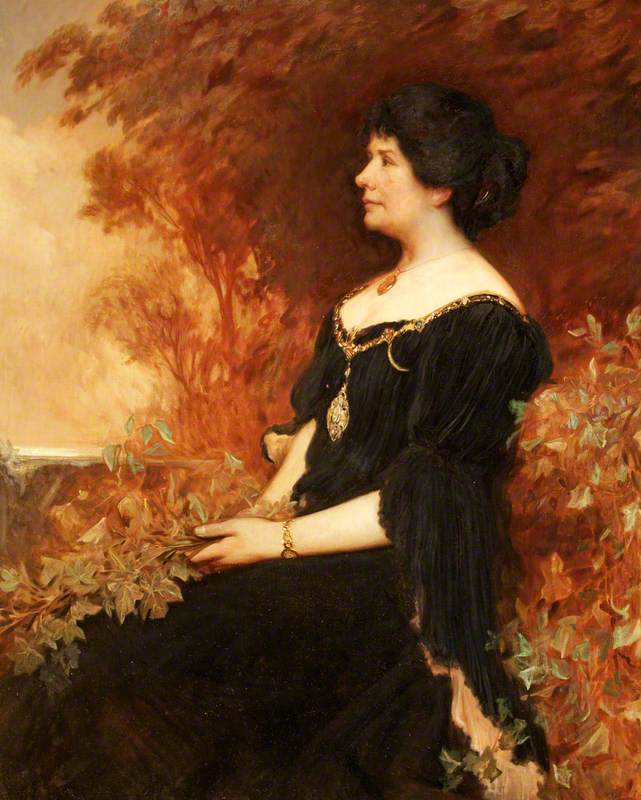
An Irish historian and nationalist, Alice lived in London where she hosted parties for artists and philosophers. Christopher Williams attended some of these parties, perhaps taken there by his friend, fellow artist Fred Appleyard, as his sister Emily Appleyard was Alice's secretary. It may have been where Christopher met Emily, and quite successfully, as the couple married in 1904.
The portrait of Mrs Sackvill-Evans was donated by her husband to the Town Hall in 1938, on the recommendation of Christopher Williams's son, Ivor.
It is believed to be Williams's first portrait commission, painted in 1899. Mrs Sackvill-Evans passed away a few months after the painting was finished, which might explain her very pale complexion in the painting.
All of these paintings have a story to tell, as well as being beautiful pieces of art in their own right. It is a real privilege to see the paintings restored and back on display for all to enjoy in Maesteg Town Hall, and to shine a light on the talents of Christopher Williams.
Stefanie van Stokkom, Heritage Development Manager, Awen Cultural Trust
The publication of this content was supported by Welsh Government funding
The Maesteg Town Hall Redevelopment Project has been funded by Bridgend County Borough Council, the European Regional Development Fund, the National Lottery Heritage Fund, Welsh Government including CADW, Awen Cultural Trust, Maesteg Town Council, the Garfield Weston Foundation, the Davies Trust, and the Pilgrim Trust
Further reading
Christopher Williams, Awen Cultural Trust

